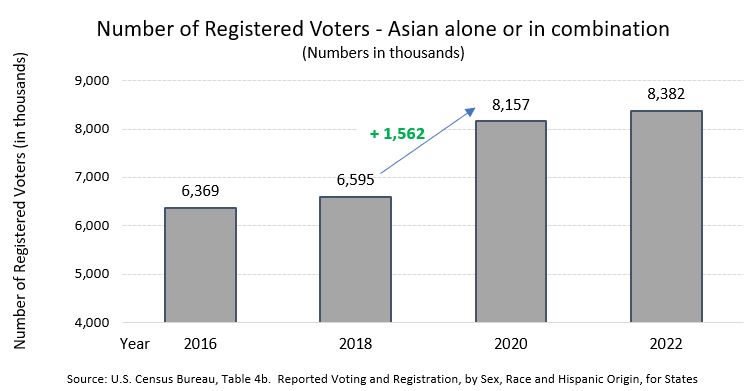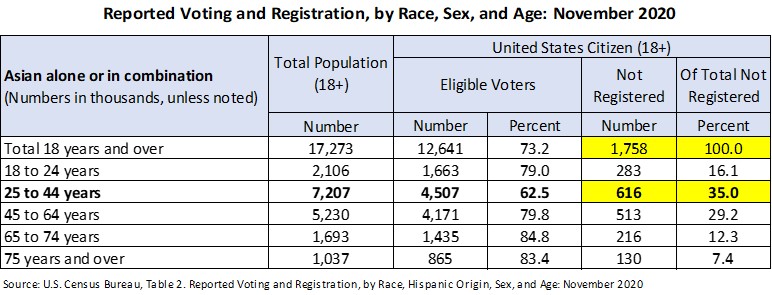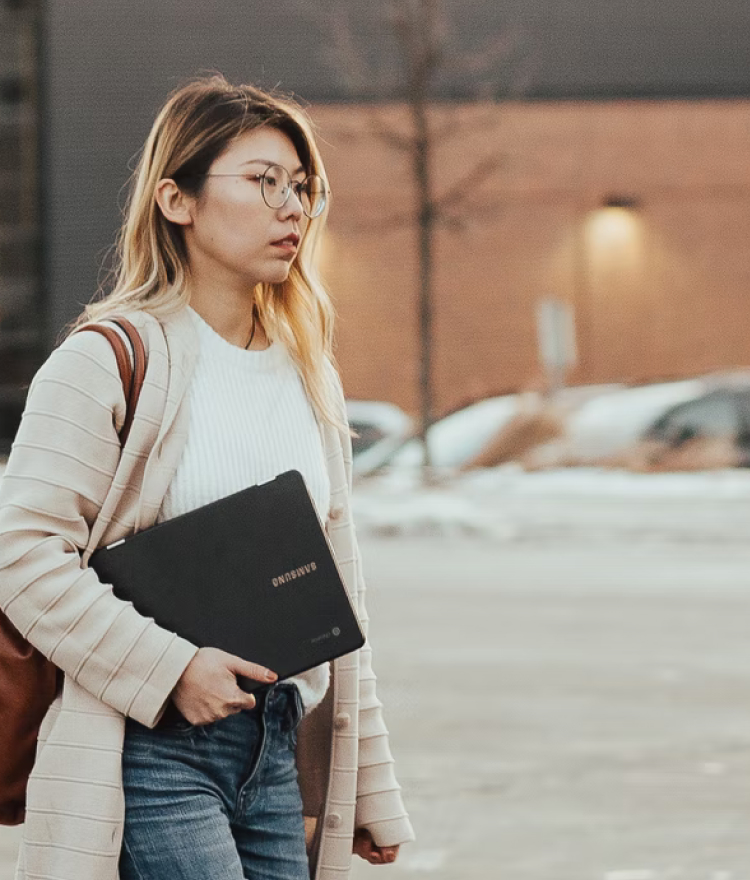Government, Resources, Voices
Voter turnout differ among Asian American subgroups and gender
Asian Americans voters are a highly diverse group whose political numbers and power have been growing. The 2020 voter turnout rates for Asian American females were 62% among eligible voters and 94% among registered voters. Similarly, 58% of eligible and 93% of registered Asian American male voters voted in 2020. Despite a growing Asian American voting bloc, voting data by Asian subgroup are barely available. A 2021 research study found disparity in voter turnout among Asian American subgroups. With Vice-President Kamala Harris, who is South Asian and Black, on this year’s presidential ticket, the Asian American electorate is energized to vote.

Asian American voters are a highly diverse group whose political numbers and power have been growing. They helped deliver Joe Biden to the oval office with high voter turnout rates in the 2020 presidential election – 60% among eligible voters and 93% among registered voters. Eligible voters are defined as voting-age (18 or older) U.S. citizens, and registered voters are defined as eligible voters who are registered to vote.

America also saw a surge of 1.6 million new registered Asian American voters in 2020 per Census data. The number of registered Asian American voters increased to 8.2 million in 2020 from 6.6 million in 2018. The number of new Asian American registered voters continued to increase. The Asian American registered voter base grew to 8.4 million in 2022.

More Asian American females register and vote
In 2020, the Asian American registered voter base comprised of 4.5 million (55%) females and 3.7 million (45%) males. The voter registration rate, defined as the number of registered voters over the number of eligible voters, was 67% for Asian American females and 62% for Asian American males. The 2020 voter turnout rates for Asian American females were 62% among eligible voters and 94% among registered voters. Similarly, 58% of eligible and 93% of registered Asian American male voters voted in 2020.

Asian Americans ages 25-44 represent the largest opportunity of eligible voters
Around 1.8 million eligible Asian American voters were not registered to vote in 2020. The largest opportunity was among eligible Asian American voters ages 25-44, where 616,000 eligible voters were not registered to vote. 35% or 1 out of every 3 eligible non-registered Asian American voter belonged to this age group.

Voting across Asian American subgroups
Despite a growing Asian American voting bloc, voting data by Asian subgroup are barely available. A 2021 research study that examined Asian American voting behavior across 10 Asian ethnic subgroups found disparity in voter turnout.
Among registered Asian American voters, Bangladeshi, Japanese, Asian Indian, Vietnamese, Pakistani, Filipino, and Korean Americans have a higher likelihood of voting compared with Chinese Americans. Bangladeshi, Japanese, and Asian Indian Americans have one of the highest likelihoods to vote – Bangladeshi Americans have the highest probability of voting at 91%. Conversely, Hmong and Chinese Americans have lower probabilities of voting at 67% and 69%, respectively.

Asian Americans are the only major U.S. racial/ethnic group where a majority of eligible voters are naturalized citizens, a defining feature of the Asian American electorate. The research found national origin affects the likelihood of voting, because each Asian American subgroup has different cultural and political experiences from their home country. Additionally, the type and timing of each Asian subgroup’s immigration path may also shape their political participation.
Asian American voters are politically engaged
Historically, Asian American voters have low voter turnout rates, similar to Hispanic Americans; however, this stereotype may no longer hold as the Asian American population has become more diverse and politically engaged. About 15 million Asian Americans are projected to be eligible to vote in 2024, up 15% from 2020 per Pew Research.

In a recent Asian American Voter Survey (released when President Biden was still on the presidential ticket), 90% of Asian American voters surveyed say that they intend to vote in November. On July 21st, President Joe Biden withdrew from the race and endorsed Vice-President Kamala Harris. Now with Vice-President Kamala Harris, who is South Asian and Black, on the presidential ticket, she has energized the Asian American electorate. Perhaps it is time for America to rid itself of the stereotype of the non-political Asian American.
Helpful Resources
Who Votes among Asian American Ethnic Subgroups? (Sage Journals)
Voting and Registration Tables (U.S. Census)
Our Political Power (MyAsianVoice)
Get a monthly dose of our latest insights!


About
myasianvoice
At MyAsianVoice, we connect Asian Americans to surveys and research to bridge the Asian data gap.
Join our growing respondent list >>
